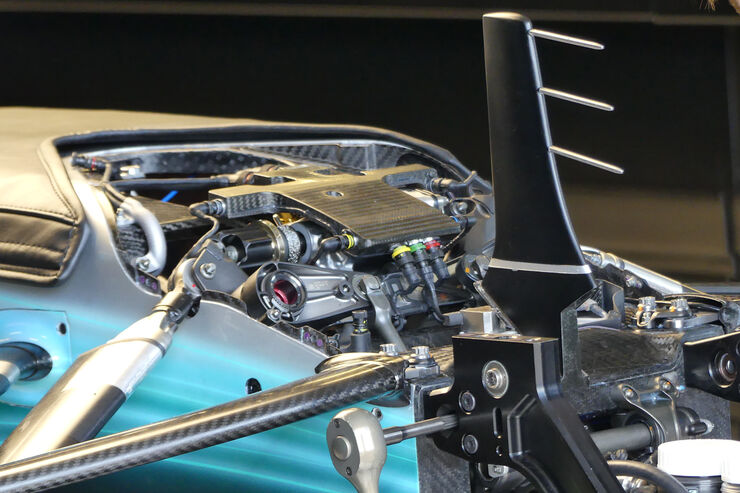So, they are admitting that they will not equally enforce this rule?
Case by case legality checks is awful!
So, they are admitting that they will not equally enforce this rule?
Assuming you are correct (& I think you are), then my guess would be tyres, with probably a better understanding of the mechanical options.DiogoBrand wrote:Why does this year's cars, even with the higher aero dependance, don't have as stiff suspension as they did back in the early 2000's? Is it because of the higuer weight, better mechanical grip or just less sensitive aero?
I think RB is still a bit in doubt. and maybe they had set up problems the last two days because they tried "watertight" suspension settings.Gothrek wrote:Is there any news on which teams had to adopt their suspension because of the TD?
https://translate.google.com/translate? ... t=&act=urlThirdly: No one knows whether a competitor, or more than one opponent in Melbourne, denounces the innovative suspension system of Red Bull Racing at the racing commissaries. While Niki Lauda, Chairman of the Supervisory Board of the Mercedes-Benz team, is "one hundred percent sure" that the silver is all legal and within the clarification made by the FIA, Marko admits: "This is very complex. You have to look at the individual components. We are, of course, within the regulations. "
But apparently, the FIA has demanded the reversal of evidence against Red Bull Racing. Marko continued: "We must now prove that everything is compliant. And not the FIA that we have some nonconformity in the car. There will always be grazes. The FIA has a handful of technicians who face an army of specialists in every big team. "
I presume mostly aero. If you look at what rakes most of the teams' floors can handle and still have an aero seal around the edge, the suspension can be less stiff to get better grip while in the early 00 and before, having the ridehight as low as possible was key to get maximum downforce from the floor.DiogoBrand wrote: ↑02 Mar 2017, 08:18One unrelated question about this year's suspension:
Why does this year's cars, even with the higher aero dependance, don't have as stiff suspension as they did back in the early 2000's? Is it because of the higuer weight, better mechanical grip or just less sensitive aero?
I understand that in this way - you reach speed X and the suspension lowers by Y mm, then you lower your speed but the suspension stays still compressed to the Y mm value and until you reach even lower speed... Or something similar...DaveW wrote: ↑23 Mar 2017, 12:27Thanks to Lio007 for the link to Autosports report. Personally, I would like an explanation of Charlie Whiting's statement reported as:
"If a suspension system behaves asymmetrically, then there is not a very justifiable reason for behaving like that - if a suspension system goes down at one speed and comes back at a different speed."
Since the "speed" of a suspension depends on, amongst other things, changes in applied load, what characteristics in the suspension itself are deemed to make it "behave asymmetrically", please? Any ideas?



They aren't that different, but Mercedes leaned their design backwards and covered everything with a cpu of some sort, maybe a canbus unit for their sensors up front. They also moved the brake fluid reservoirs further forward. I wonder what they have in the bulkhead to necessitate this design - it seems to move all the suspension components upward, which usually wouldn't be a good thing.turbof1 wrote: ↑23 Mar 2017, 16:05https://imgr2.auto-motor-und-sport.de/M ... 060586.jpg
http://uploads.tapatalk-cdn.com/2017032 ... 63cbbf.jpg
https://img.f1today.eu/x/full/photos/58 ... 8a0196.jpg
I feel sick just looking at what Mercedes uses as suspension parts in the spacer between tub and crash structure. I can relatively understand what's going on at the Red Bull, but I can't comprehense anything concerning Mercedes' suspension.